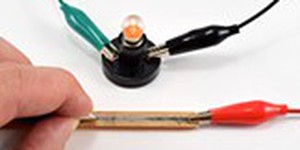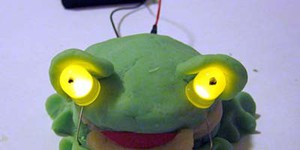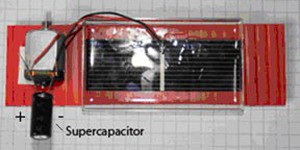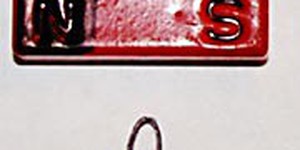Fourth Grade, Electricity & Electronics Science Projects (8 results)
Stop for a minute and try to imagine your world without electrical power and electronic gadgets.
No convenient appliances in the kitchen, no electric lights. No computers, MP3 players, television, or video games.
Your life would be completely different, wouldn't it? Electricity and electronics are so central to modern life that, paradoxically, they're easy to overlook.
|
Select a resource
Sort by
|
You may be familiar with permanent magnets—the kind that hang on a refrigerator. But did you know that other magnets, called electromagnets, can be turned on and off? When turned on, electromagnets act just like permanent magnets, but if you turn them off, their magnetic properties disappear. Electromagnets are an important part of many electronic devices, like motors, loudspeakers, and hard drives. You can create an electromagnet with a simple coil of wire and a battery. In this project,…
Read more
Featured
Have you heard that garlic powder is supposed to inhibit the growth of bacteria? Which do you think would make a better disinfectant: a solution of garlic powder or a solution of bleach? This project shows you a straightforward way to compare the effectiveness of different disinfectants (or other antimicrobial agents), by measuring zones of inhibition on a culture plate.
Read more
When your parents were kids, they probably wore polyester. Static cling was a major household issue! Now everybody wears cotton, which does not get static cling nearly as much. Why are some materials more susceptible to static cling than others? Investigate how well different materials produce static electricity by making a homemade electroscope and testing it out in this science project.
Read more
New
Have you ever noticed that on a hot day, it's more comfortable to wear a light-colored shirt than a dark one? Or that it's cooler in a park than walking down a street? This happens because different surfaces absorb and reflect heat in different ways. Urban heat islands are parts of cities where man-made surfaces like pavement and buildings replace natural surfaces like grass and trees. In this project, you will use temperature and satellite data to see if certain areas in a city have higher…
Read more
"Paper circuits" are a fun way to mix electronics and art by adding lights directly to a painting or drawing. These lights need a battery to power them, and typically you would use wires to connect them. In paper circuits, though, many materials can be substituted as "wire," including special types of paint, ink, and even aluminum foil. There are also different options for what type of battery you can use. Which materials do you think will work best? Try this project to find out!
Read more
Dimmer switches let us control the brightness of a light, anywhere from completely off to full brightness. This can be nice when you want to set the brightness "just right," as opposed to a regular light switch that only lets you turn a light on or off. It turns out that you can make a dimmer switch out of an everyday object—a pencil! Try this project to find out how a dimmer switch can control the brightness of a light.
Read more
Have you tried our first and second play dough circuits projects? Are you a master circuit artist, ready to try something even bigger and better? Try this project to see if you can build a three-dimensional light-up sculpture.
Read more
New
If someone asks you to draw a picture of a doctor, lawyer, or engineer, what first pops into your mind? The race and gender of the person you imagine might be shaped by your personal life experiences, such as whether you have family members in those professions, or what representations of them you have seen on TV or online. What do you think will happen if you ask an artificial intelligence (AI) program to generate the picture instead? Will pictures generated by AI reflect the true real-world…
Read more
Solar cells are devices that can be used as a source of power when there is light shining on them, but they stop producing energy when they are not in the light. One way to store the solar energy for later use is to use a solar cell to charge something called a capacitor. The capacitor stores the energy as an electric field, which can be tapped into at any time, in or out of light. In this electronics science project, you will use parts of a solar car to experiment with the energy storage…
Read more
This is a straightforward project that shows you how data can be digitized and stored on magnetic recording media. You'll learn how alpha-numeric characters are digitized, and you'll use bar magnets to represent the individual data "bits." You'll also learn about how much information can be stored in a small space (recording density), and how magnetic data can be erased.
Read more
You've seen that a magnet's attractive force can cause a small object (like a paper clip) to "jump" to the magnet. So a magnetic field can act through the air, but what about other materials? Here's an experiment you can do to find out. You'll need a strong bar magnet, a stack of books, a paper clip, some thread and tape. Place the bar magnet underneath the top book in your stack, so that it sticks out. Tie a piece of thread (as long as the stack of books is high) to a paper clip. You…
Read more
|
Explore Our Science Videos
How to Measure Light with Google's Science Journal App
Candy Diffusion Art
Make A Tissue Paper Parachute - STEM Activity















